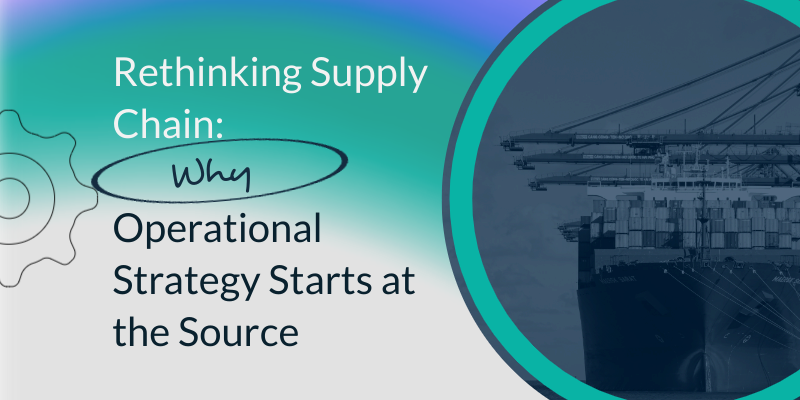Breaking Free from the Past: Why Legacy Companies Must Embrace Change to Thrive in a New Era
Legacy companies have a reputation for clinging stubbornly to traditional methods of operation, as highlighted in this insightful analysis. This adherence to the old ways can lead to significant frustration among their customers. Anyone who has attempted to navigate an online portal from a company that has been around for decades can attest to the aggravation of dealing with systems that seem like relics from the early 2000s. However, perhaps the most significant oversight of these legacy companies is their tendency to ignore the need for examining and updating their operations and processes until it becomes almost too late, often referred to as the “eleventh hour.” This procrastination in modernizing their approach can jeopardize their competitiveness and relevance in the fast-evolving business landscape.
The pandemic acted as an unprecedented wake-up call for numerous organizations, compelling them to adapt and change their usual methods, no matter how complex or supposedly immune to change they believed themselves to be. It highlighted the urgent need for agility and innovation across all sectors. In this context, we will delve deeper into the specific challenges that legacy businesses face in adapting to this new reality. Furthermore, we’ll explore the most significant lessons learned over the past few years, emphasizing the importance of resilience and the ability to pivot strategies quickly in response to global shifts.
The challenges of legacy businesses
Legacy businesses, typically defined as companies that have been around for more than 50 years, hold a prestigious position in their respective industries. With a vast workforce that often numbers in the thousands and operations that span across the globe, these organizations are pillars of stability and endurance. Their long-standing success is not just a product of time, but a testament to their ability to evolve and adapt through countless market shifts and technological advancements.
To survive for such an extended period and achieve this remarkable level of success, the majority of legacy businesses have undergone several transformations and reorganizations. This capacity for change is crucial. In some instances, they have completely overhauled their business models to stay relevant and competitive. A notable shift for many has been the move towards digitalization, embracing the internet as a primary platform for business operations. Others have transitioned from traditional one-time purchase models to subscriptions, thereby ensuring a steady stream of revenue and fostering ongoing customer relationships.
Moreover, internal operations within these legacy companies have frequently been subject to change, which is essential for incorporating new technologies and responding to shifting market demands. This might involve implementing cutting-edge software to streamline processes or introducing new departments dedicated to managing and developing fresh product lines or catering to emerging customer needs. Such adaptations are integral to maintaining operational efficiency and continuing to thrive in an ever-evolving business landscape.
These changes, while necessary, are not without their challenges. Transforming established processes and systems within such massive and well-rooted organizations requires careful planning, significant investment, and an organizational culture that is open to change and innovation. However, it is precisely these challenges that have shaped legacy businesses into the resilient and dynamic entities they are today, capable of withstanding the test of time and continuing to lead in their industries.
These shifts pose significant challenges for legacy companies, primarily because of the extensive scale and multifaceted complexity of their operations. When these organizations have relied on a specific technology or process, such as those detailed at certain technology, for many years, a considerable portion of the organization’s operational knowledge becomes deeply ingrained within these methodologies. For instance, critical data regarding a firm’s supply chain operations over the last decade might be exclusively stored within Excel files, rendering it inaccessible through any alternative means. This situation is exacerbated by the fact that various tasks within the company are often interconnected in intricate and complex manners, making the prospect of transitioning to new processes or technologies even more daunting.
Additionally, this deep-rooted reliance on established processes typically leads to significant organizational resistance to change. This resistance manifests as a collective inertia where the company, as a whole, clings to the status quo, reluctant to disrupt the familiar rhythms of its operation. However, every once in a while, an external “shock” — such as a technological breakthrough, a dramatic shift in consumer preferences, or regulatory changes — can drive the organization to reevaluate its current methodologies and potentially embrace change. Such moments, although challenging, present unique opportunities for legacy companies to adapt and innovate, ensuring their survival and continued relevance in a rapidly evolving market landscape.
The impact of COVID-19
Sometimes, leaders are compelled to navigate uncharted territories or make choices they previously deemed unfeasible. This reality came sharply into focus when the world was blindsided by the pandemic. Before this crisis, many senior executives in sprawling, established companies were under the impression that their organizational structures were too entrenched to alter long-standing processes or to actively engage their entire team in strategic discussions and pivotal decisions.
However, the pandemic’s unprecedented challenges necessitated a rapid shift to remote work for the majority of employees. It quickly became evident that not only was it possible for everyone to assume responsibility, but employees at all levels were also capable of identifying previously unnoticed inefficiencies and brainstorming innovative solutions. This collective problem-solving approach demonstrated the untapped potential within these organizations, revealing a newfound agility and resilience.
Furthermore, the pandemic underscored the unpredictable nature of global events, emphasizing the importance of proactively refining inefficient processes before they escalate into critical problems. For example, tasks that were traditionally performed manually proved to be significantly more challenging in a remote work setting. Similarly, the absence of cloud technology infrastructure became a glaring obstacle, hampering seamless collaboration and data accessibility across dispersed teams.
This situation illuminated the necessity for organizations to adopt more flexible and technologically advanced operational models. By embracing change and harnessing the collective strengths of their workforce, companies discovered that they could not only survive but also thrive in the face of adversity. The lessons learned during this period have paved the way for a new era of corporate adaptability and innovation, setting a precedent for how businesses can navigate future uncertainties with confidence and strategic foresight.
A revealing survey of supply chain executives conducted before the pandemic showcased a stark reliance on outdated practices for operations planning. An astonishing 22% of those surveyed admitted to utilizing Excel spreadsheets for their planning operations, highlighting a significant gap in the adoption of more advanced, efficient technologies. In contrast, only 15% had embraced transport management systems, which represent a more contemporary approach to managing logistical challenges.
Moreover, the survey illuminated a heavy dependence on manual processes, with a staggering 55% of respondents indicating that their planning decisions were made without the aid of modern technology. Additionally, 15% of these executives reported that their systems lacked mobile access, further emphasizing the technological lag. A significant number of these respondents were from legacy companies, traditionally slow in adopting technological advancements.
The onset of the pandemic has, however, illuminated the pitfalls of such reliance on outdated methods and systems. It has acted as a critical wake-up call, demonstrating the fragility and inefficiencies of existing practices. The urgent need for flexibility and resilience in the face of unforeseen challenges has made it abundantly clear that clinging to legacy systems and manual processes is no longer viable.
This period of disruption has provided the perfect impetus for change, offering companies that had previously resisted modernization a compelling reason to reconsider. Those who had put off change management, perhaps believing their operations to be anomalies immune to the evolving technological landscape, have found themselves at a crossroads. The pandemic has served as a catalyst, encouraging—even forcing—many to finally embrace the necessary changes, moving towards more efficient, technology-driven operations that promise not only to navigate the current crisis but to innovate and thrive in the post-pandemic world.
Key priorities for businesses looking to thrive in the modern marketplace include the adoption of automation technologies instead of relying on outdated manual processes. By leveraging automation, companies can increase efficiency and reduce the risk of errors that are often inherent in tasks performed by humans. Additionally, the use of Artificial Intelligence (AI) for accurate forecasting is crucial. AI enables businesses to make data-driven decisions, avoiding the pitfalls of inaccurate predictions due to human error.
Another critical area of focus is enabling remote work. The global shift towards remote work has demonstrated the importance of flexible work environments. By facilitating remote work, companies can tap into a wider talent pool, improve employee satisfaction, and maintain productivity regardless of physical location.
Furthermore, taking advantage of software integrations is essential. Integrations allow different software systems to communicate and work together seamlessly, thereby streamlining workflows, improving data accuracy, and enhancing overall operational efficiency.
Overall, there are four aspects businesses should pay careful attention to: People, processes, technology, and customer experience. However, it’s important to note that many of these aspects are interconnected. For example, the adoption of new technology can significantly enhance customer service by providing more personalized and efficient interactions. Similarly, implementing new processes can lead to increased employee satisfaction by reducing their workload and making their tasks more manageable.
In summary, businesses that focus on adopting automation, utilizing AI for forecasting, enabling remote work, and leveraging software integrations stand to benefit significantly. These strategic priorities not only improve operational efficiency but also enhance the experiences of both customers and employees. By keeping an eye on the key aspects of people, processes, technology, and customer experience, businesses can ensure they remain competitive and successful in the ever-evolving marketplace.
Something good will come from this
It’s never easy to change your ways when you’ve been following certain processes and routines for a long time. But events like the pandemic prove inefficiencies that don’t seem like a big deal today can turn into nightmare situations tomorrow.
To prepare yourself for the unknown, make sure that change management is a regular part of how you run your business. At Cornerstone Paradigm Consulting, we’re used to working with legacy companies to help them move away from operations that are no longer serving them. To find out more about what we can offer, contact us to book a consultation.







